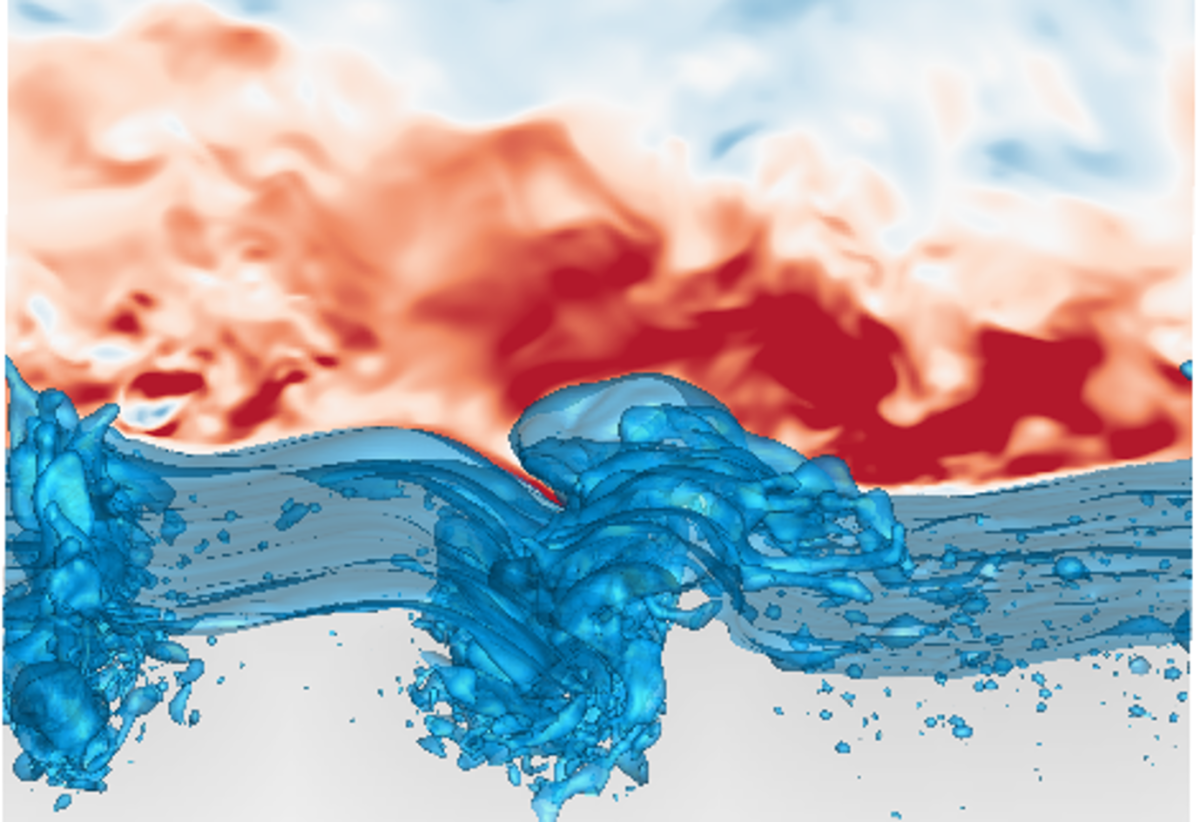A numerical simulation of wind turbulence over breaking waves

Project Summary
A surface breaking wave occurs when a wave’s steepness reaches a critical level where the crest of the wave overturns. Wave breaking contributes significantly to air-sea interactions by:
- Limiting the amplitude of surface waves
- Generating ocean currents, vorticity, and turbulence
- Enhancing the transport of mass, momentum, and energy between the atmosphere and oceans
Researching wind and wave interactions, including wind over breaking waves, helps researchers develop and improve ocean-atmosphere interaction models. The purpose of this study was to investigate the effect of wave breaking on momentum and energy transfer in airflow, through a numerical simulation. Specifically, researchers analyzed the effects of wave age and steepness on turbulent wind over breaking waves.
Methods
SAFL researchers performed direct numerical simulations of air and water as a coherent system, capturing the air-water interface using a coupled level-set and volume-of-fluid method. Researchers used fully developed wind turbulence over strongly forced steep waves as the simulation’s initial condition. Three wave ages (young, intermediate, and old) and two initial wave steepness values were considered. Wave age is defined as the ratio of characteristic surface wave speed and wind speed, which can be used to estimate how long the wind has been influencing a wave group. Researchers conducted 100 runs for each case to perform averaging, due to the unsteadiness of the wave breaking process. The two-fluid flow field was output at different times relative to the initial condition in order to vary initial turbulence fluctuations among trials. From then on, the air and water were allowed to evolve dynamically.
Outcomes
The results showed that prior to wave breaking, wave age significantly influences turbulence statistics. For young and intermediate waves, the airflow physics is governed by wind turbulence. In contrast, the airflow physics over older waves is increasingly influenced by wave-induced turbulence.
Spilling waves, which occur at low steepness, do not alter wind turbulence significantly; plunging waves, which occur at high steepness, significantly impact turbulence statistics and flow structures near the wave surface.
Future Work
Future work could include a fine resolution of wind over breaking waves. This would require more computing power, but could be used to simulate more realistic problems. Numerical simulations could also be improved and made more realistic by the incorporation of laboratory and field measurement data.
